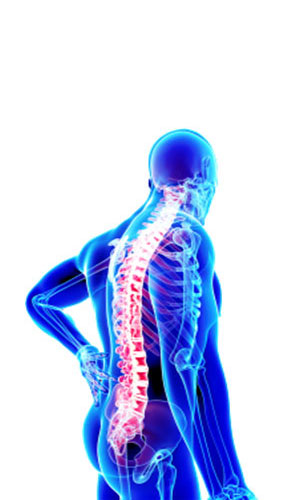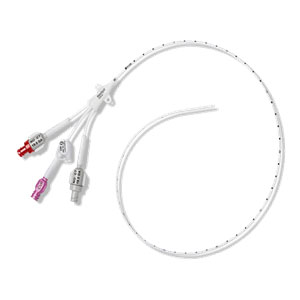Surface Treatment
The nature of material surfaces is as equally important for processing and final use as the volumetric properties. The cleanliness, surface free energy and roughness are decisive factors for adhesion when bonding, printing or coating. The wettability and adhesion behavior in the presence of dirt and water is also relevant for numerous materials and applications. Many steps in surface preparation and enhancement can be optimized by means of surface chemical methods with the help of our measuring instruments.
Below you can find some main treatment segments:
Pickling and Passivation
Micro Bead Blasting and Aluminum Oxide Blasting
Electro-polishing of metals (Specializing in Cobalt Chrome and Nitinol)
High Energy Finishing and Dry Tumbling
Vibratory Finishing
Micro-burnishing
Automated Micro-tube Flushing
Micro-Abrasive Blasting for PEEK Implants

Medical Device Coatings for Orthopedics

Orthopedics is the area of medicine dealing with the musculoskeletal system. Orthopedic surgeons employ both surgical and nonsurgical means to treat
Trauma
Sports injuries
Infections
Arthritis and other degenerative diseases
Tumors
Congenital disorders
Orthopedic procedures are now the most frequent type of surgery performed in the operating room, accounting for over 24% of procedures in 2011. Demand is being driven by the aging population, individuals’ desire to be more active later in life, more prevalent obesity and expansion of health insurance coverage.
Orthopedic products that can benefit from AGNOTEX technologies include those devices related to:
Spine
Knee
Hips
Trauma
Extremities (hand, wrist, elbow, shoulder, foot and ankle)
Sports medicine
Dental implants
Biologics
A common surface enhancement need in the Orthopedics area is to promote Osseo integration between living bone and the surface of an implant. Hydroxyapatite coating is a common material used to enhance this property. Having been typically used on metal devices, it is now being utilized on polymers such as PEEK.
Hydrophilic properties of implant surfaces also enhance Osseo integration. Harland’s surface treatments to increase surface energy are another way Osseo integration can be enhanced.
When an infection occurs in an orthopedic implant, the consequences can be a severe. The biofilms which accompanying these infections make post-implant infection especially difficult to treat. These infections require long-term antimicrobial treatment and often necessitate the removal of the implant before the infection can be completely eliminated. Our Coating Technologies can help deliver localized anti-infective compounds to help minimize the chance of a post-implant infection developing..
AGNOTEX offers six families of automated coaters which can apply nearly every coating technology in commercial use today. Systems are available to coat as few as one part at a time up to large-scale systems designed to coat tens of millions of parts a year..
Medical Device Coatings for Vascular Access
Vascular access devices are employed to access the vascular system of the body. These devices are utilized across a variety of clinical areas to administer medications, deliver nutrients, provide therapy or obtain blood for testing.
A wide range of vascular access devices can benefit from AGNOTEX including…
eripherally inserted central catheters
CVC catheters
Peripheral intravenous catheters
Hemodialysis catheters
Implantable ports
Huber needles
Vascular grafts
Introducers
Stylets
Vascular access guidewires

Lubricity – placement of vascular access devices is aided by reduced surface friction.
Infection reduction – vascular access devices often remain implanted in the patient over an extended period of time. As a result, infection is always a risk. Devices with antimicrobial properties have been a major driver of growth in the vascular access market.
Blood compatibility –Because vascular access devices often experience extended periods of blood contact, hemocompatibility is an important surface property. Active coatings can help minimize the thrombin formation on the device surface.
AGNOTEX surface enhancement technologies meet these needs with up to date coating technologies.
Vacuum Furnaces
A vacuum furnace will heat materials, typically metals, to very high temperatures and carry out processes such as brazing, sintering and heat treatment with high consistency and low contamination.
The processing of components through a vacuum furnace can offer many advantages over conventional thermal Vacuum Furnace treatment routes:
No surface oxidation or discoloration.
Minimal distortion.
No post cleaning operations.
Near finished, machined shape prior to treatment.
Flux free brazing.
Combined vacuum/atmosphere processing.
Repeatable quality.
Environmentally acceptable furnaces.
Clean, safe, quiet and efficient.
Heating metals to high temperatures normally causes rapid oxidation, which is undesirable. A vacuum furnace removes the oxygen and prevents this from happening.
An inert gas, such as Argon, is typically used to quickly cool the treated metal back to non-metallurgical levels (below 400 °F) after the desired process in the furnace. This inert gas can be pressurized to two times atmosphere or more, then circulated through the hot zone area to pick up heat before passing through a heat exchanger to remove heat. This process continues until the desired temperature is reached.
